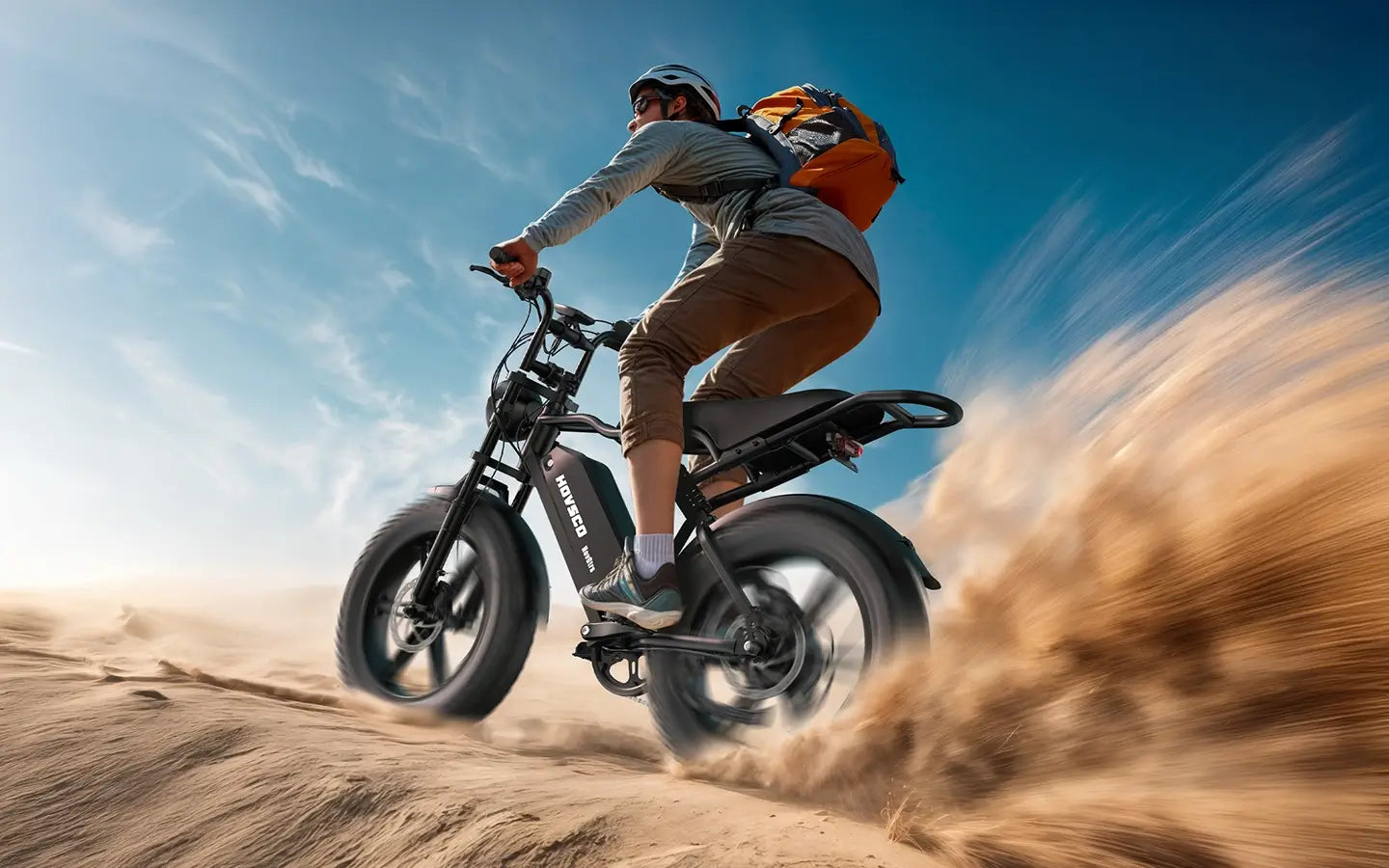
- by LiuJiazhu
What Is an Electric Trail Bike and Why Choose One in 2025?
- by LiuJiazhu
An electric trail bike is a specialized electric mountain bike designed explicitly for off-road trail riding, combining powerful motors, durable frames, advanced suspension, and traction-focused tires to handle rugged terrain. In 2025, electric trail bikes offer riders extended battery range, enhanced climbing ability, and superior control, making them ideal for adventure seekers who want to tackle challenging trails with less effort and more excitement.
Electric trail bikes distinguish themselves through robust construction tailored for off-road use. They typically feature full suspension systems with travel ranging from 120mm to 160mm to absorb shocks from rocks, roots, and uneven ground. The wide, grippy tires paired with high-torque mid-drive motors are optimized for navigating steep climbs and technical descents, contrasting commuter or city e-bikes that emphasize practicality and smooth rides on paved surfaces.
Top-rated electric trail bikes in 2025 balance motor power, battery capacity, suspension travel, and lightweight frames to deliver optimal performance:
| Model | Motor Power | Battery (Wh) | Suspension Travel | Weight (lbs) | Range (miles) | Price Range |
|---|---|---|---|---|---|---|
| Trek Rail 9.9 XX1 AXS Gen 3 | Bosch Performance CX | 750 | 160mm front, 150mm rear | 49.7 | Up to 75 | $13,499 |
| Specialized Turbo Levo SL | Specialized SL 1.1 | 320-700 | 150mm front, 140mm rear | 48-53 | 40-60 | $9,000–$14,000 |
| Cannondale Moterra Neo SL | Bosch Performance CX | 625 | 120mm front, 120mm rear | 48 | 60-75 | $7,000–$10,000 |
| Rad Power RadRover Trail | 750W rear hub | 672 | 80mm front | 77.5 | 45-65 | $2,199 |
| Engwe P275 | Bafang mid-drive | 720 | 80mm front | 56.3 | Up to 85 | ~$2,200 |
Electric trail bikes utilize high-torque mid-drive or powerful hub motors to assist riders in climbing steep hills and surmounting technical obstacles with ease. Battery capacities typically exceed 500Wh, enabling lengthy rides deep into natural terrain. Multiple pedal-assist levels let riders modulate power output to match trail difficulty and endurance goals, optimizing battery life and ride comfort.
Full suspension with front and rear shocks ranging from 120mm to 160mm travel significantly improves traction and reduces rider fatigue by smoothing rough trail impacts. Frames are engineered for durability and lightness, often from carbon fiber or aluminum alloy. Frame geometry favors stability at higher speeds and maneuverability on technical terrain, enhancing rider confidence and control.
Electric trail bikes excel across varied challenging landscapes—from rocky hill climbs and root-laden paths to sandy patches and moderate downhill sections. Their electric assistance expands accessible terrain, allowing longer rides and faster recovery. Precise handling and robust traction let riders safely negotiate steep descents and tight switchbacks without compromising speed or stability.
Pros:
Cons:
When selecting an electric trail bike, prioritize motor power and battery capacity aligned with the terrain and distance typical for your riding. Evaluate suspension travel and frame build quality for desired agility and comfort. Consider weight, rider fit, and available safety features. Trusted brands like HOVSCO offer reliable models with robust warranties and customer support suited for demanding trail riding.
“Electric trail bikes symbolize a remarkable fusion of technology and rugged design,” explains a HOVSCO technician. “They empower riders to conquer landscapes that were previously physically demanding, with less fatigue and more fun. Selecting the right balance of motor torque, battery range, and suspension travel is crucial for maximizing enjoyment and safety on the trails.”
How far can I expect to ride on an electric trail bike?
Ranges vary widely, typically between 40 and 75 miles depending on battery size and terrain.
Are electric trail bikes heavier than regular mountain bikes?
Yes, due to batteries and motors; however, suspension and frame design mitigate handling challenges.
Can electric trail bikes handle steep climbs and technical descents?
They are designed to excel at challenging climbs and technical trail features.
What maintenance do electric trail bikes require?
Regular checks on suspension, brakes, battery health, and drivetrain are essential.
Are electric trail bikes suitable for casual riders?
Absolutely—they offer assisted riding that makes off-road exploration accessible to novice and experienced riders alike.
Share:
What Is a Pedal Assist Bike and How Does It Work? A Complete Guide
Why Buy An Electric Bike At Walmart, Costco, Or Amazon?